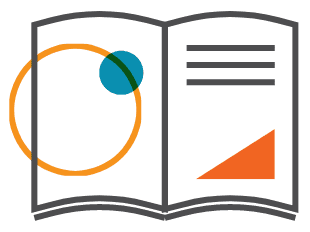You’re likely familiar with the concept of taking out a loan, but did you know you can invest in private lending and hold promissory notes with your retirement account?
While you cannot borrow money from your own IRA, just about any other non-disqualified person or business can. A loan from your tax-advantaged plan is no different than any other loan. Your account provides money to a borrower who makes principal and interest payments according to the negotiated terms. Before lending money with your IRA, it’s important to understand what that entails as well as the potential benefits and risks.
Understanding Promissory Notes:
Before delving into the pros and cons of lending money with a self-directed IRA, it’s essential to know what a promissory note entails.
Definition: A promissory note is a legal document in which one party promises to pay a specific amount of money to another party. It outlines the terms and conditions of the loan, including the principal amount, interest rate, repayment schedule, and any other relevant details.
Key Components:
Principal Amount: The initial amount borrowed which must be repaid to the lender.
Interest Rate: The rate at which interest accrues on the principal amount.
Repayment Schedule: The timeline for repaying the principal amount and accrued interest. This may consist of periodic payments (e.g., monthly, quarterly) or a single lump-sum payment at maturity.
Maturity Date: The date when the promissory note becomes due and payable in full, marking the end of the loan term.
Collateral (if any): Some promissory notes may be secured by collateral, such as real estate or tangible assets, to provide additional security for the lender in case of default.
Types of Notes:
Secured Promissory Notes: Backed by collateral, these notes offer greater security for lenders but may entail lower interest rates for borrowers.
Unsecured Promissory Notes: Not backed by collateral, these notes rely solely on the borrower’s promise to repay. These notes may carry higher interest rates for borrowers.
Convertible Promissory Notes: These notes allow the lender to convert the debt into equity (e.g., shares of stock) under specified conditions, offering potential upside if the issuer experiences growth or a successful exit event.
Promissory notes can serve as investment vehicles for individuals seeking fixed-income opportunities outside of traditional stocks and bonds. With private lending, investors become lenders, earning interest income on their investment until the note matures or is repaid.
Now that we’ve clarified what a promissory note entails, let’s explore the advantages and disadvantages of incorporating them into a self-directed IRA for retirement investing.
Potential Benefits of Investing in Promissory Notes with a Self-Directed IRA:
Diversification: Private lending provides an avenue for diversifying your retirement portfolio beyond traditional stocks, bonds, and mutual funds. This diversification can potentially mitigate risk and enhance overall portfolio performance.
Income potential: Promissory notes can offer attractive returns compared to traditional fixed-income investments like bonds or CDs. Depending on the terms of the note and the creditworthiness of the borrower, investors may achieve higher yields.
Control: Unlike other investments, private lending offers the opportunity for you to set the terms for growth. As the IRA owner, you determine the interest rate and repayment terms putting you in control of the potential growth. This means that even before beginning the investment, you have a decent idea what to expect in terms of growth.
Risks to consider:
Risk of Default: One of the primary risks with private lending is the potential for borrower default. If the borrower fails to repay the principal and interest as agreed, it could result in loss of investment capital. When this happens, the note may be deemed a zero-value asset. Your IRA still holds the asset until zero-value paperwork has been submitted to remove it. Until that happens you may be subject to account administration fees.
Illiquidity: Notes are typically less liquid than publicly traded securities. This meaning they cannot be easily sold or converted to cash before maturity. Investors should be prepared to hold the notes until maturity or find a secondary market for liquidity, which may be limited.
Due Diligence: Conducting thorough due diligence is crucial when investing. You may want to assess the creditworthiness of the borrower. Review their payment or credit history. You may want to review the terms of the note with a financial professional. It may also be beneficial to understand the underlying collateral (if any).
In conclusion, private lending with a self-directed IRA offers both opportunities and challenges. While it can diversify your retirement portfolio, provide passive income, and offer potential for higher returns, there’s also risks such as default, and illiquidity. As with any investment decision, thorough due diligence, careful consideration of risks, and consultation with financial professionals are essential to making informed choices that align with your long-term financial goals.
–
–
Please note that the contents of this blog are accurate as of the date of publication and are provided for informational purposes only. They are not intended, and should not be construed, as financial, legal, or other professional advice. Readers are encouraged to perform their due diligence and should always consult a qualified financial professional before making any investment decisions.


 Back to Blog
Back to Blog

